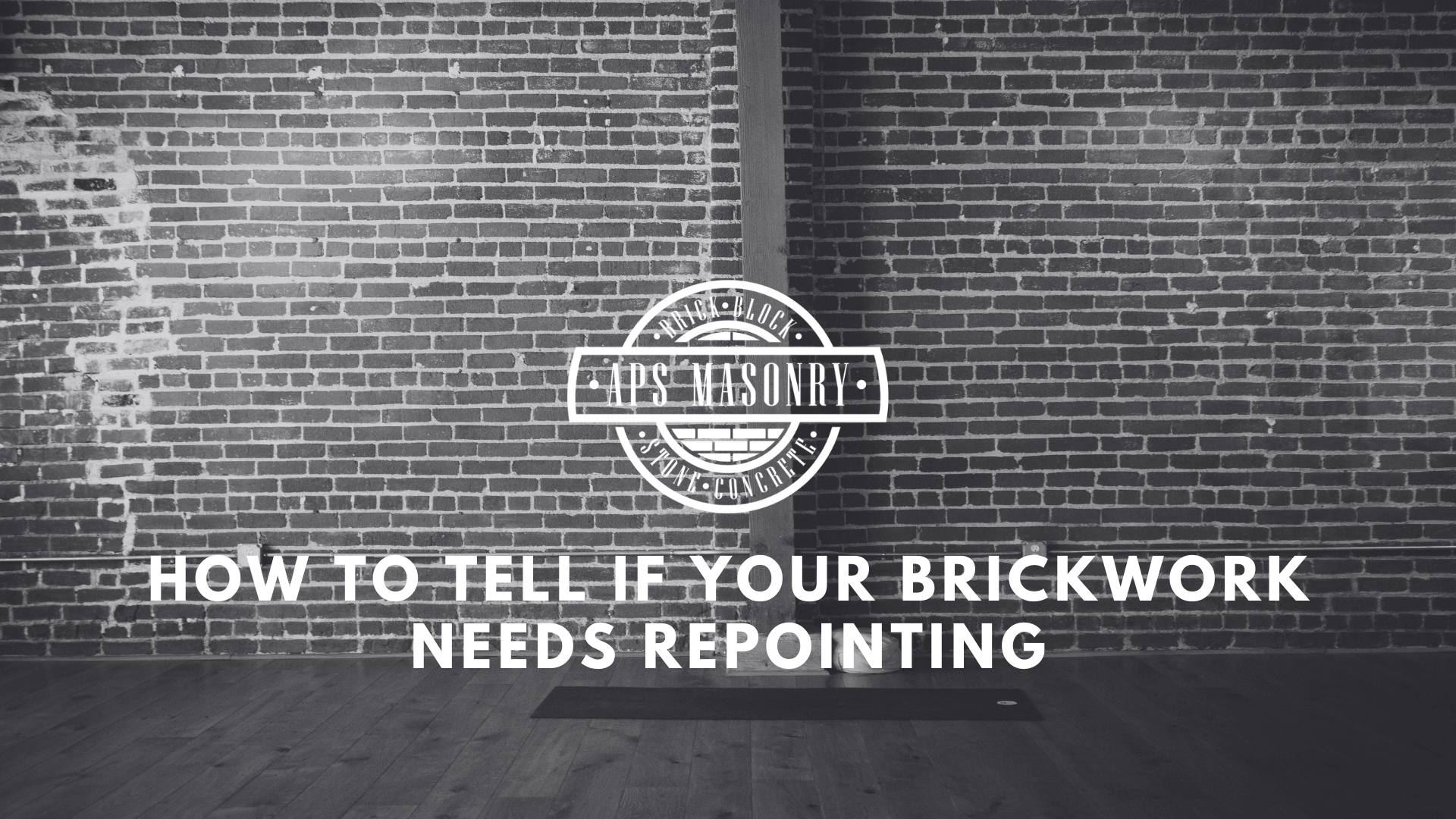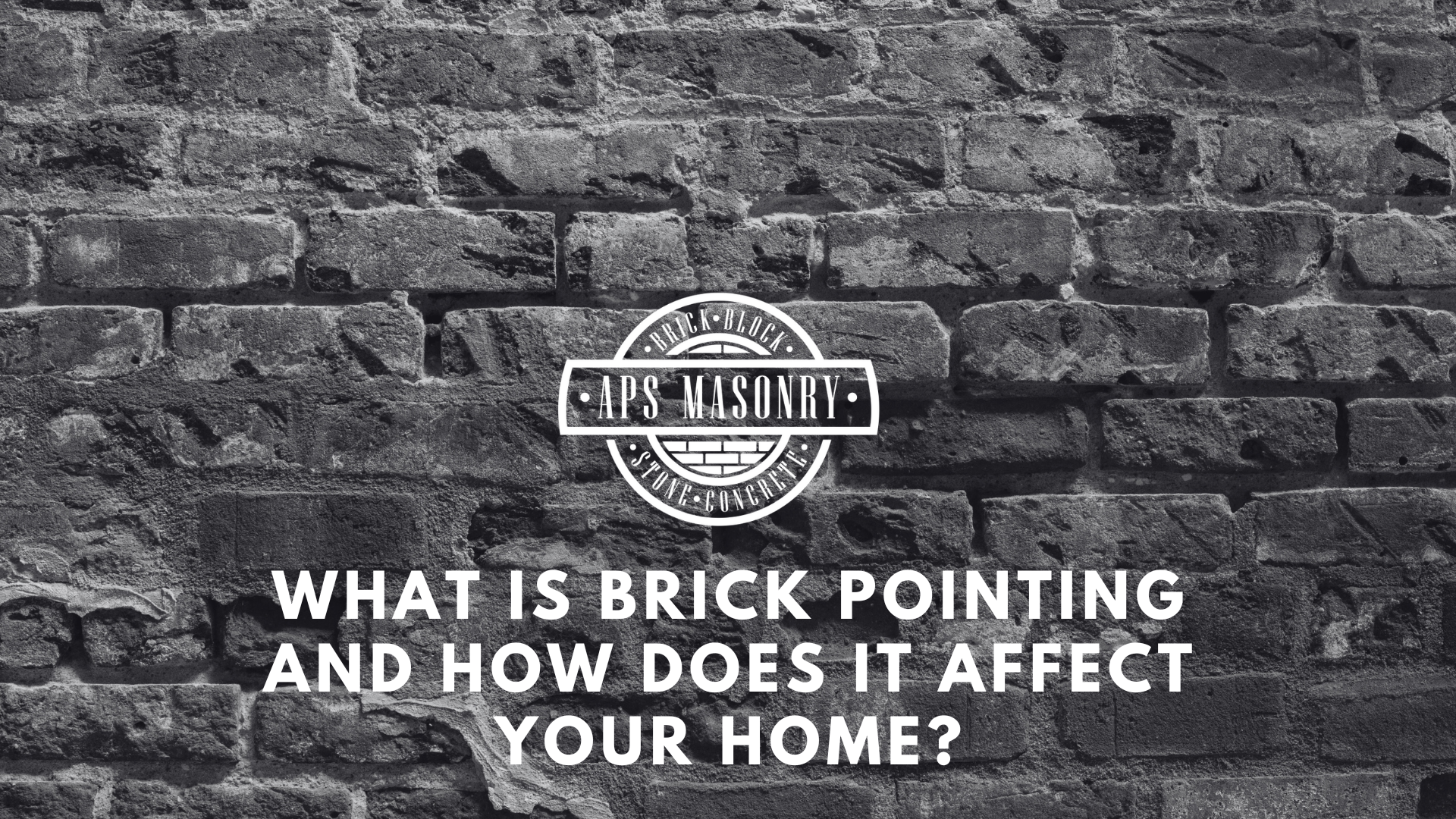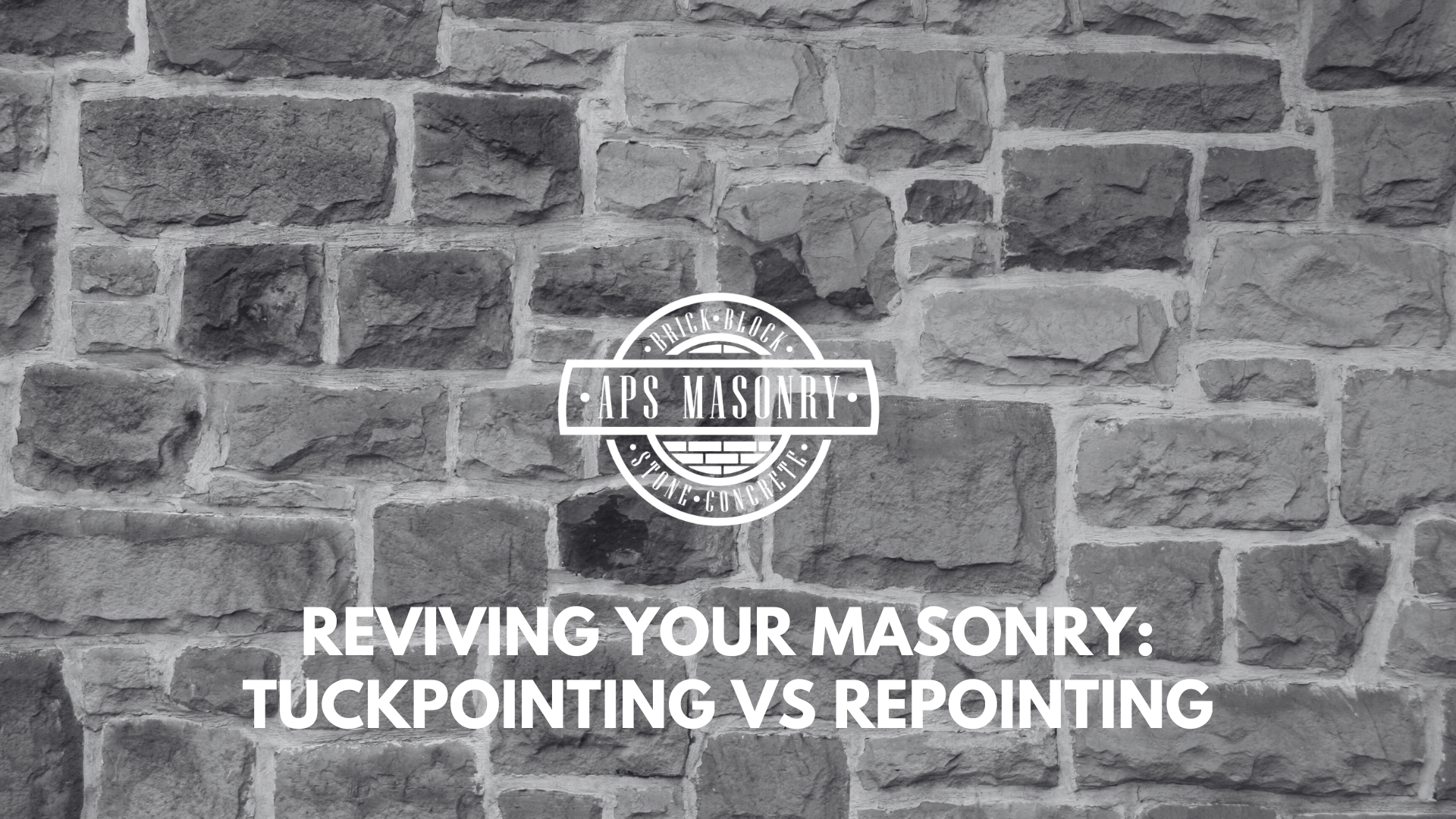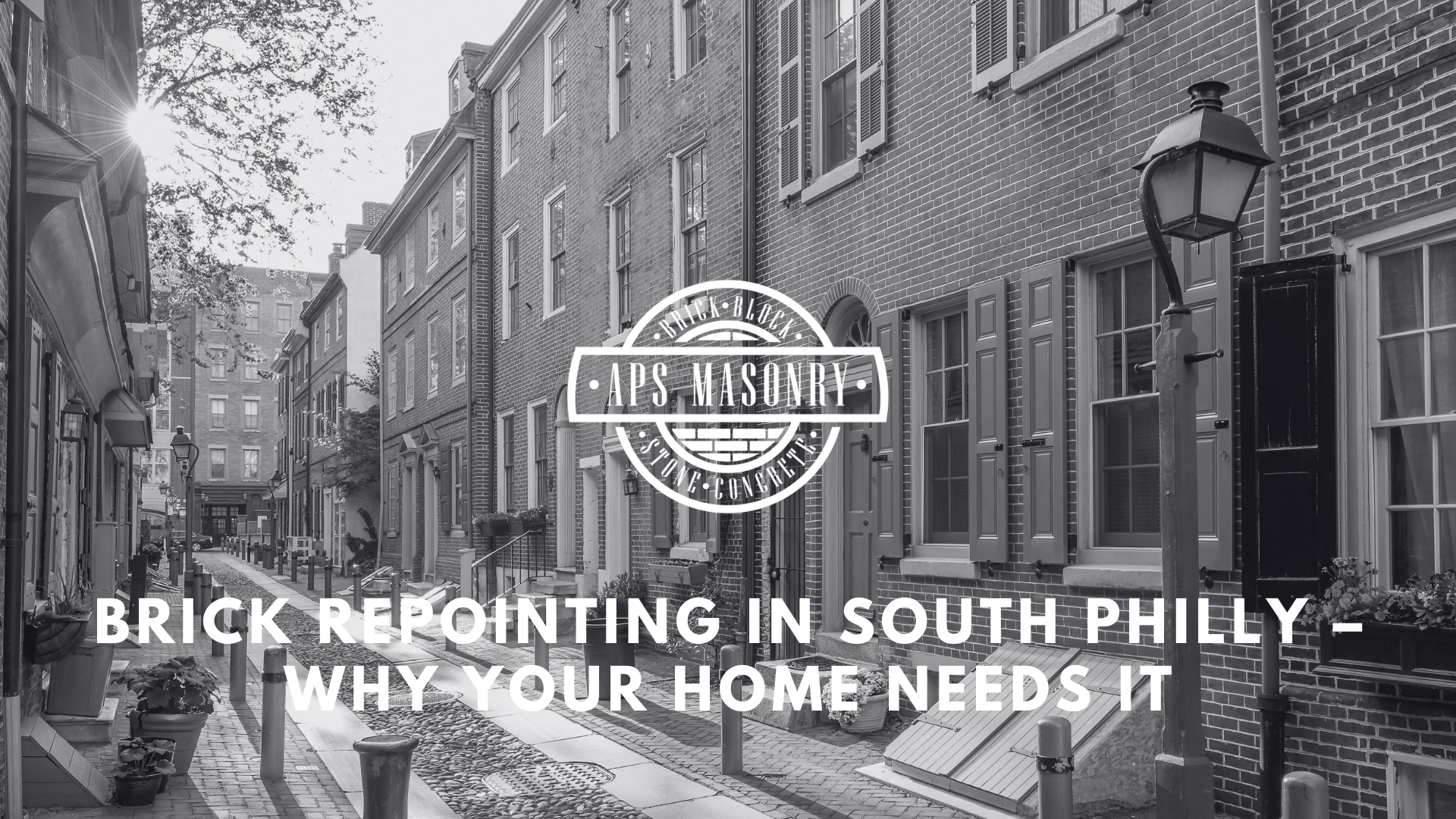What Is Brick Pointing and How It Protects Your Home
Brick-pointing is very important for maintaining the structural integrity and beauty of your home. This process involves repairing and filling the...

Strong mortar keeps Philadelphia’s brick homes stable, sealed, and built to last.
Brickwork only holds when the joints are solid. Across Philadelphia, homeowners are starting to see the early signs—small cracks, missing mortar, bricks that feel loose when pressure’s applied. These aren’t isolated issues. They’re the first indicators that your walls are beginning to separate.
Repointing keeps the structure together and is a simple process, but only if done early. We’ve seen facades in Fishtown lose their integrity from one wet winter. South-facing walls in Passyunk take heavy sun and frost, which breaks down mortar faster. Even stone foundations in Mt. Airy develop soft joints that lead to water damage, rising damp, and long-term structural shifting if they’re not repaired.
At APS Masonry Contracting, we repoint brick and stone across the city. We replace damaged mortar with new material that matches the original in strength and composition, restoring both stability and appearance. This work isn’t decorative, it should be considered essential maintenance that keeps Philadelphia homes in good shape, block by block.
Call APS Masonry for expert brick repointing services in Philadelphia—solid repairs, done right the first time.
Gaps between bricks are the first warning. On older homes in Brewerytown and Northern Liberties, those joints often sit just below eye level—easy to miss unless you’re looking. What starts as a shallow recess collects water, dries out, and deepens with every temperature shift.
Cracks that run along the mortar are another clear signal. These usually show up near corners, windows, or chimneys where the structure takes more stress. Repointing at this stage is direct, targeted work. Wait too long, and you’re replacing bricks instead of just renewing the joints.
Loose bricks are common in South Philly facades. One small section can begin to move if the surrounding mortar has turned sandy. A wall that shifts even slightly starts to separate at the top first, pulling everything else with it.
Inside, the clues are just as clear. Crumbling plaster, faint water stains near the baseboard, and white mineral trails—efflorescence—on the interior surface all point to eroded mortar on the outside. That’s when repointing stops being maintenance and starts being protection.
Stress points in brick structures give way before flat surfaces. Chimney stacks, parapet edges, window corners, and exposed returns break down faster due to constant exposure and shifting loads. These vulnerable areas show early signs—hairline cracks, missing joints, and slight separation that spreads across the wall.
South-facing walls in Philadelphia take heavy sun and frost, forcing expansion and contraction through each season. Joints dry out, pull away from the brick, and open up to moisture. Water enters, freezes, and widens the damage in cycles.
Failed pointing starts local and spreads. A few deteriorated joints on a parapet become a loose corner within months. Regular inspections around rooflines, entryways, and foundation tops help catch small failures before they compromise the full structure.
Mortar should sit tight between bricks, flush with the surface, and firm to the touch. Recessed joints, crumbling edges, or sandy residue on the ground are all clear signs of wear. These are the first indicators that your property’s pointing has started to fail.
Mortar that breaks apart with a light scrape or comes loose with minimal pressure needs to be replaced. Loose bricks, gaps between joints, and flaking around the edges show the wall no longer holds as one structure. These weaknesses allow water into the wall cavity and put the building’s masonry at risk.
Interior walls reveal the same problems. Cracks along baseboards, patches of rising damp, and visible efflorescence are all signs of failing mortar behind the finish. Surface damage often begins on the outside but works its way in.
Regular inspections keep repair costs low. Repointing bricks with fresh mortar at the first sign of deterioration restores strength, stops water damage, and protects both the appearance and structural integrity of the entire system. If you're not confident in verifying the condition of your mortar, call APS Masonry for a guaranteed expert inspection—no guesswork, just straight answers.
Skip repointing and you’re not saving money—you’re setting the stage for a bigger, more expensive job. On average, a basic repointing project on a single exposed wall in Philadelphia ranges from $3,000 to $6,000, depending on height, access, and joint depth. Let that same wall deteriorate past the point of repair, and you're looking at a full tear-down and rebuild. That’s $18,000 to $30,000, not including the added cost of permits, scaffolding, and brick replacement.
In Queen Village, a corner property with brick joints so far gone that bricks were falling onto the sidewalk. The city issued a safety violation and required a structural engineer on-site before repairs could begin. The job stalled for three weeks while permits cleared and emergency bracing was installed—at the homeowner’s expense.
Inside the house, moisture from bad joints means ruined plaster, floor damage, and mold remediation. You could be in Roxborough and spend over $12,000 on interior repairs because water tracks through a compromised parapet and soaks the second-floor joists.
Beyond cost, the disruption is real. Rebuilds require more crew, more equipment, and more time—often weeks instead of days. You’ll deal with dust, blocked walkways, temporary supports, and in some cases, vacating part of the home for safety. Repointing prevents all of that.
Worst-case? Structural instability that leads to a collapsed wall. It happens more than you'd think, especially in homes built before 1920. And once that wall fails, you’re not patching it. You’re rebuilding your property from the studs out.
Call APS Masonry today for a free estimate—know exactly what your brickwork needs before it turns into a major repair.
Mortar carries the load, seals out moisture, and keeps the wall from shifting. Brick walls across Philadelphia remain stable only when the joints between them are intact.
Fresh mortar improves appearance and restores the structure’s ability to resist water damage, movement, and decay. In repointing jobs throughout the city, we’ve seen solid bricks surrounded by failed joints—cracked, hollowed out, or missing entirely. That failure breaks the bond holding the surface together.
Professional repointing involves more than replacing what’s loose. We cut out damaged mortar, match the new material in strength and composition, and apply it deep into the joints to lock the structure tight. Using incorrect materials—especially hard Portland cement on older clay brick—damages the wall permanently. One building in Fairmount suffered major surface loss after a poorly matched repair trapped water behind the brick surface.
Repointing with care protects structural integrity, preserves the building’s masonry, and extends the life of the entire system—without the need to replace a single brick.
Brick walls stay strong when joints stay tight. The moment gaps open or mortar begins to flake, both structure and appearance start to decline. That breakdown shows up first on the outer brick surfaces, where weather and moisture do the most damage.
Professional repointing solves both problems in a single process. Damaged joints are cut out, cleaned back to solid base, and filled with fresh mortar that bonds completely. That new mortar restores stability to the building’s masonry and prevents further deterioration from water and freeze cycles.
A wall with missing joints doesn’t just look neglected—it performs poorly. Moisture penetrates deep into the structure, reducing thermal performance and creating long-term problems behind the surface. Sharp, well-tooled joints hold the line. They stop decay, support structural integrity, and restore the wall’s visual form.
Repointing is not a patch. It’s a full reset on the condition of the wall—one that protects both the durability and the external appearance of the property.
APS Masonry Contracting has built a reputation for repointing homes across Philadelphia—brick by brick, joint by joint. We don’t cut corners, we don’t overfill joints with messy grout, and we never walk away from a job that isn’t clean, aligned, and durable.
Our team understands the construction materials behind every façade, from early 1900s clay brick to newer mixed masonry builds. We select mortar that bonds properly, matches the original in strength and appearance, and sticks under all weather conditions—including freezing temperatures that destroy weaker patch jobs.
Philadelphia’s brick structures were built to last. They still can—but only if the repointing work matches the quality of the original construction. That’s what we deliver. Every wall we touch leaves stronger, cleaner, and protected from further deterioration. We don’t cover problems—we correct them at the root.
When the job’s done, your wall doesn’t just look better. It performs better. That’s what makes our repointing services different—and why homeowners across the city trust APS to keep their masonry in good shape.
Chemical cleaning can strip away the protective outer layer of older mortar. If that surface has been weakened, repointing becomes even more critical. New mortar must be carefully matched and packed deeper into the joints to restore proper bonding. A rushed job over chemically damaged surfaces won’t hold—and it won’t stop water damage from spreading.
DIY repointing often looks easy—but without the right tools and mortar mix, the work doesn’t last. Improper installation, shallow fills, or mismatched grout can leave an unsightly finish and create more mess than progress. When the material doesn’t stick or cracks after the first freeze, the job has to be redone—often at higher cost.
Repointing seals the wall’s surface and prevents moisture from entering. That’s only true if the damaged joints are properly removed, cleaned, and filled with fresh mortar that bonds completely. If water has already entered the structure, repointing will stop it from getting worse—but deeper issues may also need to be addressed depending on how the wall was originally constructed.
Repointing is one of the most durable, cost-effective maintenance services you can invest in. It prevents larger failures, protects the integrity of the wall, and avoids full reconstruction. Walls that are properly repointed remain stable for decades—and the work pays for itself by preventing expensive structural damage and long-term deterioration.

Brick-pointing is very important for maintaining the structural integrity and beauty of your home. This process involves repairing and filling the...

In masonry, two important techniques maintain and restore the charm and stability of brick structures: tuckpointing and repointing.

Cracked joints, loose mortar, and worn brickwork don’t fix themselves. Repointing protects your South Philadelphia home before the structure pays the...